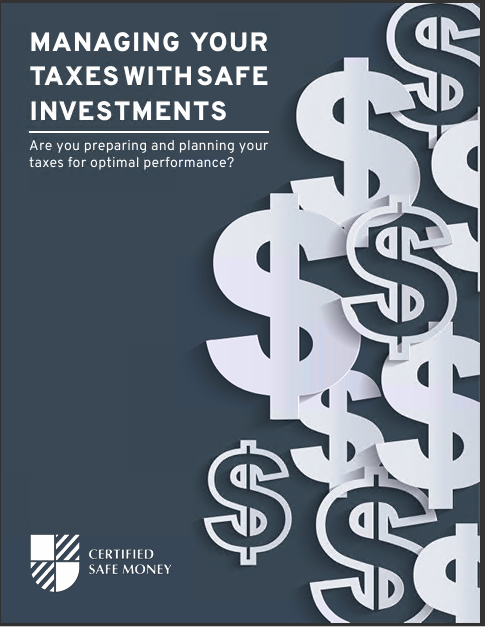Building a Secure Retirement Income Stream: Strategies for a Stable Financial Future
- Key Takeaways:
- Diversify your income sources and implement strategic planning strategies to build a secure retirement income stream.
- Regularly review and adjust your retirement plan to adapt to changing circumstances and ensure financial stability in retirement.
Retirement marks a significant transition in life, where the focus shifts from earning income to relying on accumulated savings and investments to cover living expenses. However, ensuring a secure and reliable income stream in retirement requires careful planning and strategic decision-making. In this comprehensive guide, we’ll delve deeper into each aspect of building a secure retirement income stream, exploring strategies, considerations, and best practices to help you achieve financial peace of mind during your golden years.
Assessing Your Retirement Income Needs
Before embarking on the journey to build a secure retirement income stream, it’s crucial to have a clear understanding of your financial needs and goals. Begin by estimating your anticipated expenses during retirement, including essential living costs such as housing, healthcare, groceries, and transportation, as well as discretionary expenses like travel and entertainment. Take into account any potential inflationary pressures that may affect your purchasing power over time.
Once you have a comprehensive view of your retirement expenses, consider your expected sources of income. These may include Social Security benefits, pensions, retirement account withdrawals, investment income, rental property income, part-time employment, and any other potential sources of cash flow. By comparing your estimated expenses with your projected income, you can identify any potential shortfalls and develop a plan to bridge the gap.
Diversifying Income Sources
A key principle in building a secure retirement income stream is diversification. Relying solely on one income source exposes you to significant risks, such as market volatility, inflation, and unexpected changes in government policies. To mitigate these risks, it’s essential to diversify your income sources and create a balanced portfolio of reliable streams.
Start by maximizing your Social Security benefits. Delaying your claim beyond the full retirement age can increase your monthly benefit amount, providing a higher income stream for the rest of your life. Additionally, consider any pension benefits you may be entitled to from previous employers or government agencies.
Next, focus on your retirement accounts, such as 401(k)s, IRAs, and other tax-advantaged savings vehicles. These accounts offer the opportunity for tax-deferred growth and can provide a significant portion of your retirement income. Evaluate your investment allocations within these accounts, balancing risk and return based on your time horizon and risk tolerance.
Incorporate guaranteed income products, such as annuities, into your retirement plan to provide a steady stream of income that lasts for life or a specified period. Annuities can help protect against longevity risk, ensuring that you won’t outlive your savings. Explore different types of annuities, such as immediate, deferred, fixed, and variable annuities, to find the best fit for your needs and objectives.
Finally, consider generating additional income through part-time work or consulting in retirement. Not only can this provide a financial boost, but it can also keep you engaged and fulfilled during your retirement years.
Strategies for Maximizing Retirement Benefits
To optimize your retirement benefits and build a secure income stream, consider implementing the following strategies:
- Delay Social Security Benefits: As mentioned earlier, delaying your Social Security claim can increase your monthly benefit amount. For each year you delay beyond full retirement age, your benefit increases by a certain percentage until age 70. By waiting to claim benefits, you can maximize your lifetime income.
- Employ Tax-Efficient Withdrawal Strategies: When withdrawing funds from retirement accounts, consider the tax implications of your withdrawals. By strategically timing your withdrawals and managing your tax bracket, you can minimize the amount of taxes you owe and preserve more of your retirement savings.
- Utilize Required Minimum Distributions (RMDs): Once you reach age 72 (or 70½ for those born before July 1, 1949), you’re required to start taking minimum distributions from your traditional retirement accounts, such as 401(k)s and traditional IRAs. Be sure to factor these RMDs into your retirement income plan and adjust your withdrawals accordingly.
- Optimize Investment Allocations: Regularly review and rebalance your investment portfolio to ensure that it remains aligned with your retirement goals and risk tolerance. Consider adjusting your asset allocation as you age, gradually shifting towards a more conservative investment strategy to protect your savings from market volatility.
- Consider Long-Term Care Insurance: Long-term care can be a significant expense in retirement, especially if you require assisted living or nursing home care. Long-term care insurance can help cover these costs, protecting your retirement assets and ensuring that you receive the care you need without depleting your savings.
Planning for Contingencies
Despite careful planning and preparation, unexpected events can derail even the most well-thought-out retirement income strategy. It’s essential to plan for contingencies and have a safety net in place to protect against unforeseen circumstances.
One common contingency to consider is healthcare expenses. As you age, healthcare costs are likely to increase, so it’s crucial to have adequate health insurance coverage and savings set aside for medical emergencies. Explore Medicare options, supplemental insurance plans, and health savings accounts (HSAs) to help manage healthcare costs in retirement.
Another contingency to plan for is the possibility of outliving your savings. With advances in healthcare and increased life expectancy, many retirees are living longer than ever before. To protect against longevity risk, consider incorporating annuities or other guaranteed income products into your retirement plan to provide a steady stream of income for life.
Additionally, consider the potential impact of inflation on your retirement income. While Social Security benefits are adjusted annually for inflation, other sources of income may not keep pace with rising prices. To hedge against inflation risk, invest in assets that have historically outpaced inflation, such as stocks, real estate, and inflation-protected securities.
Finally, have a plan in place for addressing unexpected financial emergencies, such as home repairs, car maintenance, or family emergencies. Maintain an emergency fund with three to six months’ worth of living expenses in a liquid, easily accessible account to cover unexpected costs without disrupting your long-term financial plan.
Conclusion
Building a secure retirement income stream is a multifaceted endeavor that requires careful planning, diversification, and flexibility. By assessing your retirement income needs, diversifying your income sources, and implementing strategic planning strategies, you can create a stable financial foundation that supports your lifestyle throughout retirement. Remember to regularly review and adjust your retirement plan as needed to adapt to changing circumstances and ensure a prosperous and worry-free retirement.
Contact Information:
Email: mark.zimmerman@aurifexfinancial.com
Phone: 8668727470
Bio:
Mark Zimmerman, Sr currently is the Managing Member of Aurifex Financial Group, LLC. Aurifex Financials mission is to help clients realize their vision of living life on their own terms by providing a holistic approach to personal finance. As an independent Insurance Agency, Aurifex Financial provides insurance solutions for property and casualty, home, business, health, Medicare, life, and Annuity products.
Disclosure:
Important Notice to Recipients: This content may contain confidential or privileged material that is for the sole use of the intended recipient. Any unauthorized review, use, or distribution is prohibited and may be unlawful. If you received this email in error, please notify the sender and delete this message and all attachments














